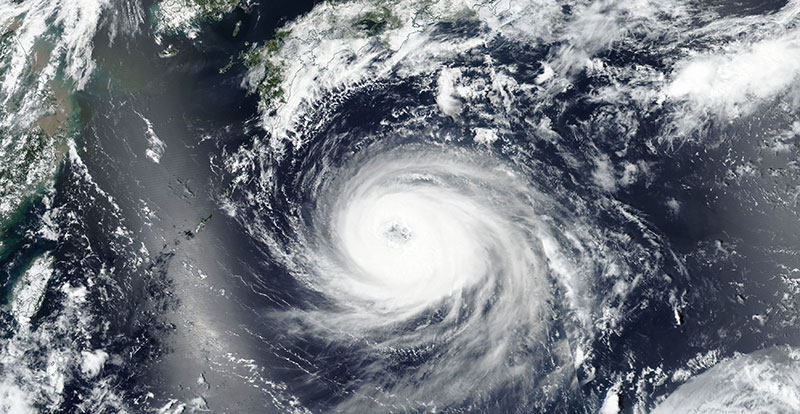Astronaut Captures Whirling Typhoon Soulik from Space
NASA astronaut Ricky Arnold caught a spectacular view of Typhoon Soulik swirling toward southern Japan from his post on the International Space Station.
Arnold posted the image on Twitter Aug. 20, warning everyone to stay safe in the wake of the whirling storm. According to the Washington Post, Soulik is one of three storms currently churning in the Pacific Ocean — Hurricane Lane, which may hit Hawaii, and typhoons Soulik and tropical storm Cimaron, heading toward East Asia. Soulik's winds are traveling at 115 mph (185 km/h), which is equivalent to a Category 3 hurricane, and may hit the Amami Islands of Japan as early as Aug. 21. (Typhoons are the same type of storm as hurricanes, but they occur in different geographical areas — storms in the North Atlantic, central North Pacific and eastern North Pacific get the designation hurricane, while similar storms in the Northwest Pacific are typhoons. The South Pacific and Indian Ocean get tropical cyclones.)
Satellites also have their eyes on the storms. NASA's Short-term Prediction Research and Transition Center posted a tweet with data from the Japan Meteorological Agency's Himiwari satellite, and NASA's and the National Oceanic and Atmospheric Administration's Suomi-NPP satellite caught a view of Typhoon Soulik approaching Japan and Korea as well.
The typhoon's status and movement can be visualized live on NASA's Worldview website.
Email Sarah Lewin at slewin@space.com or follow her @SarahExplains. Follow us @Spacedotcom, Facebook and Google+. Original article on Space.com.
Breaking space news, the latest updates on rocket launches, skywatching events and more!

Sarah Lewin started writing for Space.com in June of 2015 as a Staff Writer and became Associate Editor in 2019 . Her work has been featured by Scientific American, IEEE Spectrum, Quanta Magazine, Wired, The Scientist, Science Friday and WGBH's Inside NOVA. Sarah has an MA from NYU's Science, Health and Environmental Reporting Program and an AB in mathematics from Brown University. When not writing, reading or thinking about space, Sarah enjoys musical theatre and mathematical papercraft. She is currently Assistant News Editor at Scientific American. You can follow her on Twitter @SarahExplains.

